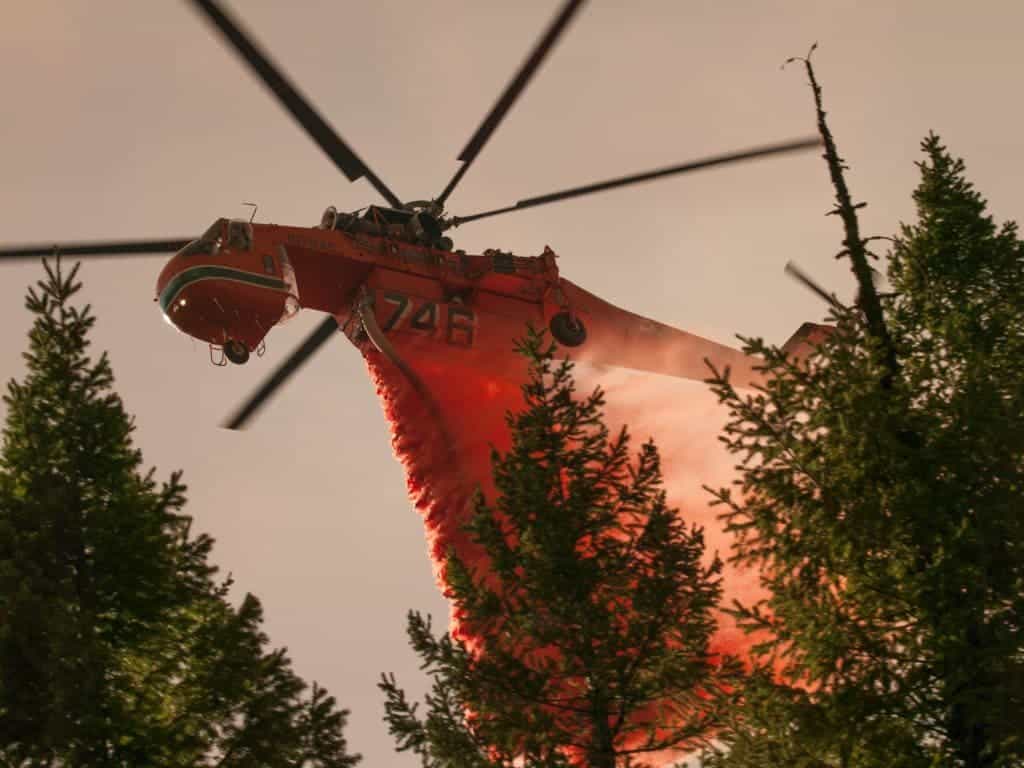The state of California has seen during the last two years a record number of seasonal wildfires, leading to a set of disastrous blazes. While there are many reasons behind them, climate change hasn’t been on the list – until now.

Helicopter drops fire retardant on the Happy Camp Complex Fire in the Klamath National Forest in California. Credit: US Department of Agriculture (Flickr)
Since the 1970s, California wildfires have increased in size eight-fold, with the annual burned area growing by nearly 500%, a study published in Earth’s Future journal said, linking the increase with climate change.
“Human-caused warming has already significantly enhanced wildfire activity in California, particularly in the forests of the Sierra Nevada and North Coast and will likely continue to do so in the coming decades,” the authors of the paper wrote.
The study concluded that the summer forest fires that recently affected the North Coast and Sierra Nevada regions have a strong connection to arid ground conditions brought on by increasing heat. It suggested that wildfires could grow exponentially in the next 40 years, as temperatures continue to rise.
When air heats up even modestly, it causes more moisture to evaporate from soils and vegetation, researchers explained. This leads to fires starting easier and spreading faster and farther. Hotter temperatures cause drier land, which causes a parched atmosphere.
“It’s not a surprise to see that climate has this effect in forests, but California is so big and so variable, there is no one-size-fits-all explanation for how climate might affect wildfires across the board,” said the study’s lead author, Park Williams.
Williams and colleagues noted that average summer temperatures in the state have risen 3.25 degrees Fahrenheit since 1896, with three-quarters of that increase occurring since the early 1970s. From 1972 to 2018, the area burned annually has increased fivefold mainly by a more than an eightfold spike in summer forest fires.
The study noted that the effects of climate are highly seasonal, and can vary depending on vegetation type, topography and human settlement patterns across California’s highly diverse landscape.
For example, summer fires did not increase in many non-forested areas dominated by grasses or shrubs. This, they say, was probably due to a combination of intense firefighting and prevention efforts, and reduced vegetation due to drought. In fall, destructive fires have grown, but the effects of a warming climate are not clear yet.
“Revisit this in 20 more years, and we’ll almost definitely be saying, ‘Yeah, fall fires have the global-warming fingerprint on them.’ But right now, we’re still emerging from the range of natural variability,” Williams said.









